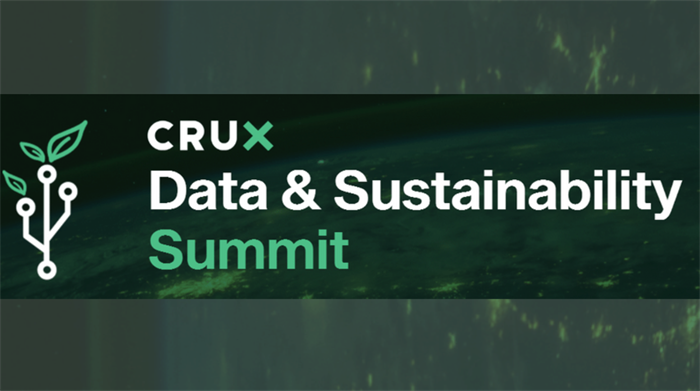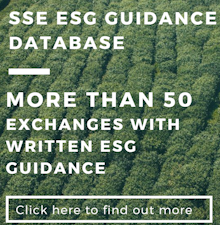
Crux Informatics organized a two-day virtual summit to discuss data and sustainability. The Data & Sustainability Summit gathered 25 of the leading experts and thought leaders in the sustainable technology and ESG investing sectors.
“We applaud Crux Informatics for organizing this event and bringing together a broad range of experts on ESG issues,” said Anthony Miller, Coordinator of the United Nations Sustainable Stock Exchanges initiative, who participated in the panel that explored the path to standardization in ESG investing. With the onslaught of ESG datasets and sources, what is the right path to standardization in today’s world of evolving disclosure frameworks? This session included speakers from the Global Reporting Initiative (Siobhan Cleary, Director of Capital Markets Engagement, GRI) the Sustainability Accounting Standards Board (Sonal Dalal, Director of Civil Society & NGO Outreach, SASB) and Arabesque asset management (Todd Arthur Bridges, Global Head of Sustainable Investing & ESG Research, Arabesque Group). The panel discussed the latest initiatives from civil society, industry and regulatory bodies to create standards and reporting frameworks across ESG datasets and ratings.
GRI, SASB and SSE are involved in different aspects of ESG disclosure, with GRI and SASB working on standard-setting and SSE focused on working with stock exchanges and security market regulators to facilitate increased adoption and implementation of ESG reporting standards. Increased disclosure of ESG information has been the topic of one of the longest-standing work-streams within the SSE. In September 2015, when the SSE launched its Model Guidance for exchanges, fewer than one-third of stock exchanges around the world were providing guidance on reportingESG information for their markets. Today, more than half of the SSE’s members have published guidance. To learn more about SSE work in this area, visit our ESG Disclosure workstream on the SSE website.
 Also in 2015, the SSE launched its database tracking which exchanges have published ESG guidance, which has now been updated with an analysis of the reporting instruments most frequently cited by the guidance documents. GRI and SASB, for example, are referred to by (respectively) 93% and 73% of stock exchange guidance documents. The data indicates a high-degree of consensus among stock exchanges on the main international ESG disclosure instruments, which is an important step forward towards standardisation in this area.
Also in 2015, the SSE launched its database tracking which exchanges have published ESG guidance, which has now been updated with an analysis of the reporting instruments most frequently cited by the guidance documents. GRI and SASB, for example, are referred to by (respectively) 93% and 73% of stock exchange guidance documents. The data indicates a high-degree of consensus among stock exchanges on the main international ESG disclosure instruments, which is an important step forward towards standardisation in this area.
The Path to Standardization in ESG Investing: EU Non-Financial Reporting Directive (NFRD)
When asked about the EU’s work on its NFRD, the SASB speaker emphasised that a revised NFRD could lead to a globally accepted system of standards for non-financial disclosure. SASB also mentioned that the EU’s “double materiality” concept is key to achieving the objectives of the NFRD. Dobule materiality recognizes that ESG information has a broader audience than traditional financial reporting. The double materiality entails that ESG issues impact a company’s financial performance and also reflects how a company’s actions on these issues impact society. More can be found in SASB white paper. GRI also supports the European Commission’s plans to revise the NFRD and has made available its contribution to the EU public consultation regarding the NFRD.
SSE speaker made remarks about EU NFRD influence on securities regulators around the world. Many securities regulators around the world have demonstrated increasing interest in the relationship between sustainability issues and their core mandates. In order to support securities regulators on how, within their existing mandates, they can act (and are acting) on sustainability-related risks and opportunities, the SSE recently launched a new interactive Securities Regulators Database to provide examples of how securities regulators are already contributing to the achievement of the Sustainable Development Goals. These examples can be filtered by the ten action areas found in the SSE’s Action Plan for securities regulators which is the central guidance of the SSE publication How securities regulators can support the Sustainable Development Goals. To learn more about SSE work in this area, visit our Securities Regulator workstream on the SSE website.